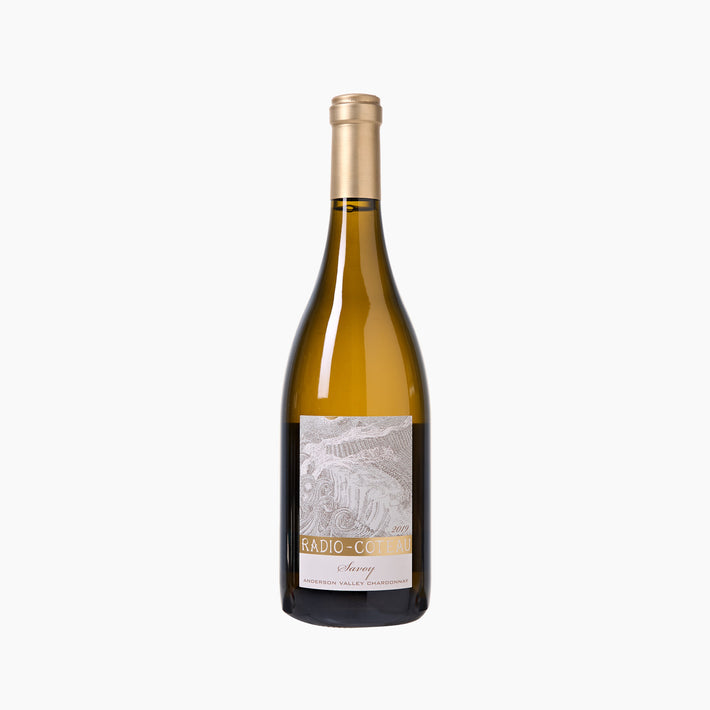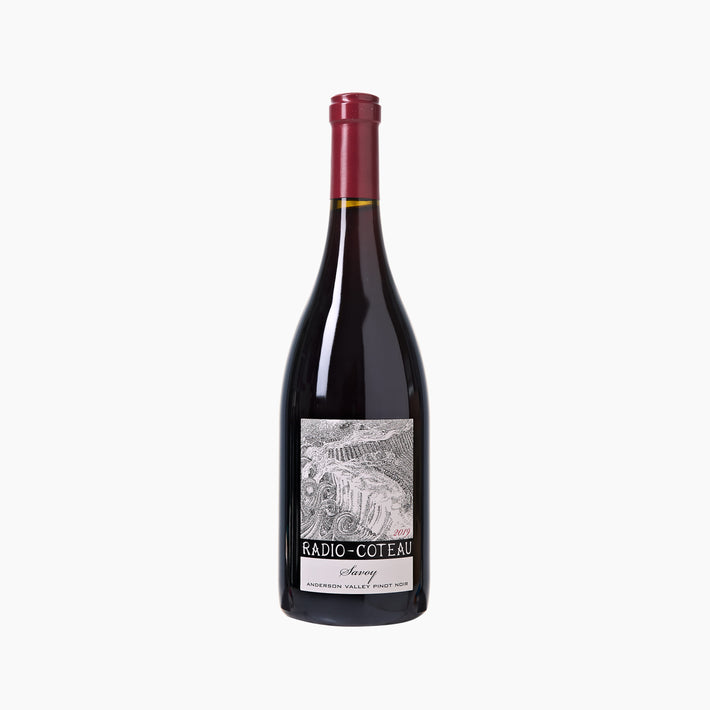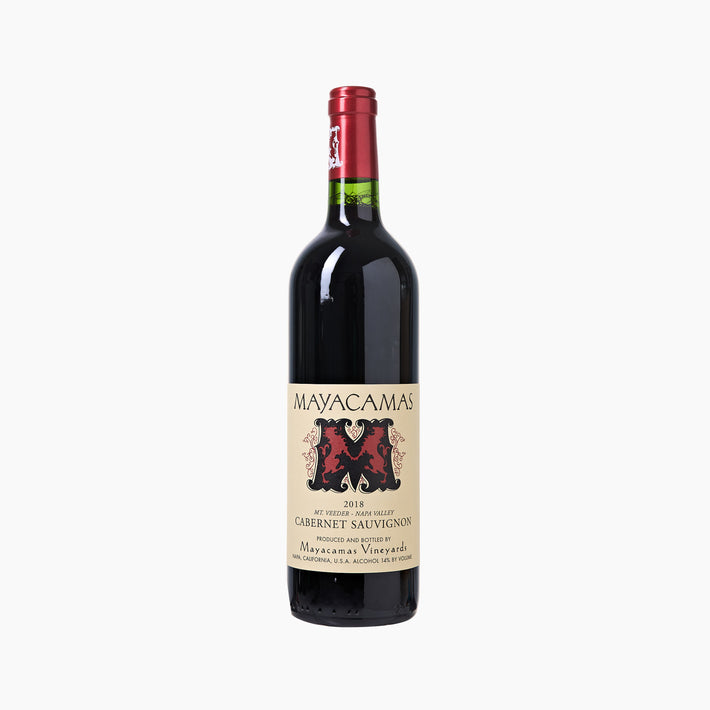New-Wave USA
There has been an influx of wine from the west coast of the USA hitting Australian shores lately. It comes with a renewed interest in American wine here in Sydney. At Five Ways, we’re certainly coming across more and more great stuff, much of which is arriving in Australia for the first time.
As part of this exciting wave of new US things, in March we hosted a USA masterclass for 12 customers here at the shop, showcasing some of these wines. American Master Sommelier Jonathan Ross (ex. Eleven Madison Park, New York) ran the tasting, and from that, we picked the eyes out of what was on offer. Below we offer you our pick of what’s available. All of this is now in stock, however, some wines are very limited. Ches Cook, FWC.
Radio-Coteau Anderson Valley Savoy Chardonnay 2019
I was initially drawn to these wines as I recognised the Savoy Vineyard name on the label. My favourite American Pinot producer, Littorai, also takes fruit from this site, so I was fascinated to make the comparison. To my pleasure, both the Chardonnay and Pinot Noir really impressed me. They’re both quite hedonistic in a way, but without going too far. Great fruit concentration and reasonably generous without excessive flabbiness or fruit sweetness. Simple delicious wines to drink with plenty of complexity built in. – Ches Cook, FWC.
The Savoy Vineyard in the Anderson Valley, Mendocino County, has established a firm reputation for producing some of the north coast’s most exceptional cool climate Chardonnay and Pinot Noir. The 18-hectare, southwest-facing site lies 120 kilometres northwest of the Radio-Coteau estate. Sussman has a per-acre contract and pays a premium for his fruit, so he may retain control over how those acres are managed viticulturally. Low yields, green harvesting and organic farming are a few of Sussman’s requirements.
Like the rest of the Anderson Valley, Savoy enjoys a very pronounced diurnal range—night-time drops in temperature can be as much as 25 degrees Celsius—which brings the signature tension of Anderson Valley alongside flavour ripeness in both the Pinot Noir and Chardonnay wines. While a who’s-who of the Sonoma wine scene source Pinot Noir from this vineyard, there are just over two hectares planted to Chardonnay, going only to Fel Wines and Radio-Coteau.
Sussman works with two Chardonnay clones within the Savoy site; the Wente clone vines (70%) have small clusters and berries and quite a mineral profile, while the Prosser clone (30%) lends a more tropical fruit profile to the blend. The fruit was picked in late August and was whole-bunch pressed into barrel for wild fermentation. It went through full malo and enjoyed a 17-month élevage on lees with no bâtonnage in 20% new, lightly toasted, tightly-grained French oak. The wine was bottled without fining or filtration.
Compared to the Wingtine, the style is more in the classic Californian vein; richer, with a creamier feel, yet supported by mouth-watering acidity. - Producer's Notes.
“The 2019 Chardonnay Savoy is absolutely gorgeous. In this vintage, the balance seems more driven by brightness and acids than by the open-knit textures that are often found at in this Anderson Valley site. Dried flowers, chamomile, mint and lemon peel linger.” 92 points, Antonio Galloni, Vinous

Radio-Coteau Anderson Valley Savoy Pinot Noir 2019
I was initially drawn to these wines as I recognised the Savoy Vineyard name on the label. My favourite American Pinot producer, Littorai, also takes fruit from this site, so I was fascinated to make the comparison. To my pleasure, both the Chardonnay and Pinot Noir really impressed me. They’re both quite hedonistic in a way, but without going too far. Great fruit concentration and reasonably generous without excessive flabbiness or fruit sweetness. Simple delicious wines to drink with plenty of complexity built in. – Ches Cook, FWC.
On a stunning hillside vineyard in the heart of Anderson Valley, Eric Sussman has worked with the Savoy Vineyard since Radio-Coteau’s genesis, beginning with Pinot Noir in 2002. A who’s-who of Sonoma’s finest source from this vineyard (Littorai and Peay included), where the Pinot Noir develops intense flavour over a growing season lengthened by the cooling maritime influence that funnels through the valley.
Radio-Coteau has been working with the same vineyard blocks (vines planted between 1991 and 1996) for almost two decades. With a complex patchwork of clonal selections, each block is organically farmed to its own specific needs. Hand-picking at night and transport to the cellar in the early morning allows for optimum handling and whole berry integrity. The fruit is fermented with 41% whole clusters, and a 16-month élevage occurs in light to medium-toasted, tightly-grained French oak (34% new). The wine is bottled unfined and unfiltered and rests for a further year in bottle before release.
The 2019 unfolds with intricate layers of luxurious black cherry, warm cloves, and forest floor notes carried by well-integrated, silky tannins and a refreshingly long finish. - Producer's Notes.
“Richard Savoy planted this vineyard in the early 1990s, on pastureland at the meeting of Gowan Creek and the Navarro River, deep into northeastern Anderson Valley. Cliff Lede purchased the site in 2011 and farms it organically. A parcel with three clones—Martini, 115 and Pommard—goes into Eric Sussman’s 2019, which shows the complexity of the mixed plant material in the spice of plump rosehips, the richness of fresh figs, the lasting scent of a coastal redwood forest. Meaty and ripe, this wine has direction and a tight focus, suited to age and delicious now if you decant it for partridge or other dark meat game birds.” 95 points, Wine & Spirits Magazine

Birichino St George Pinot Noir 2021
Both Birichino wines really impressed me, as they are only medium bodied, bright, pure and energetic. In this way, the producer ethos is clear, as these two wines are from very different grape varieties. Red fruit dominates the flavour profile and lightness of touch seems to define the producer style. Their prices, relative to a lot of other American wine, seem reasonable, too. – Ches Cook, FWC.
Santa Cruz. The Saint Georges Pinot Noir hails primarily from the very old Besson Vineyard, established in the early 1900s at the southern reach of the Santa Cruz Mountains. The site is marginally too low and on the wrong side of the road to be officially included in the Santa Cruz Mountains AVA. Instead, the wine is labelled in homage to George Besson, with whom Birichino has worked for over 20 years. The vineyard is managed organically to make the most of the rich granitic and sandy loams.
The 45-year-old Pinot Noir vines contribute 85% of the fruit for this wine, with the remaining 15% sourced from the Enz, Antle and Boer vineyards (the latter two in Chalone at high elevation on limestone and granite soils). It was fermented with around 30% of the stems added back and aged in old barriques and demi-muids.
This is already a delicious wine, offering up waves of succulent red fruit, sappy brightness and underbrush to go with its juicy, supple and balanced palate. To quote an anonymous source at our USA tasting in Melbourne recently, “It’s really delicious”. - Producer's Notes.

Mayacamas Cabernet Sauvignon 2003
The best wines of the recent influx of American wine to Australia, with the prices to match. The most important thing to note here when talking about Mayacamas, is to make sure you do not place them in typical ‘Napa’ mould. They are far removed from this. When producers in the Napa went chasing the Robert Parker (Wine Advocate) scores during the 80s, 90s and 00s, Mayacamas stuck to their own style, unmoved by the trends in the industry. While many took the approach ‘bigger is better’, seeking riper fruit, more oak, more alcohol and more extraction, Mayacamas, perched at around 700m above sea level, continued making elegant, medium bodied, chiselled Cabernet Sauvignon. As the Parker era dies out, it is clear that class is permanent and these wines are again considered the amongst the best in the region, albeit in a different (and more refined) style to many others. – Ches Cook, FWC.
Super elegant, almost ethereal in it's feel. All class and finesse here, and looking much younger than its age would suggest. Seemingly timeless with a seamless delivery of tobacco, autumn leaf, gentle cassis and brown leather. Fantastic. Ches Cook, FWC.

Mayacamas Cabernet Sauvignon 2018
The best wines of the recent influx of American wine to Australia, with the prices to match. The most important thing to note here when talking about Mayacamas, is to make sure you do not place them in typical ‘Napa’ mould. They are far removed from this. When producers in the Napa went chasing the Robert Parker (Wine Advocate) scores during the 80s, 90s and 00s, Mayacamas stuck to their own style, unmoved by the trends in the industry. While many took the approach ‘bigger is better’, seeking riper fruit, more oak, more alcohol and more extraction, Mayacamas, perched at around 700m above sea level, continued making elegant, medium bodied, chiselled Cabernet Sauvignon. As the Parker era dies out, it is clear that class is permanent and these wines are again considered the amongst the best in the region, albeit in a different (and more refined) style to many others. – Ches Cook, FWC.
Right up there with some of the best Cabernet from anywhere in the world. Comparisons for me come back to Mount Mary Quintet or Cos D'estournel. Like the 2003, this is a lesson in weightlessness and class. Such an elegant package with nothing out of place. A real 'wow' wine. Ches Cook, FWC.
The current release saw a mix of fermentation vessels; concrete (60%), stainless steel (30%) and neutral French puncheons (10%). Post fermentation it rested in foudre for 20 months, followed by 12 months in French barrique and the usual two years in bottle. - Producer's Notes.
